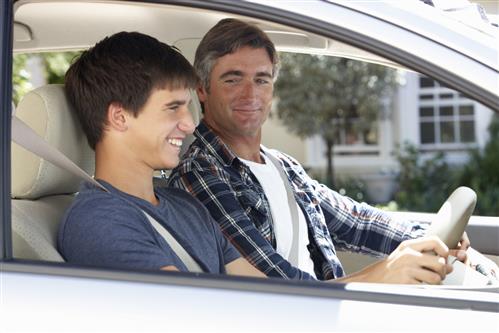For most teenagers, getting a driver’s license is a cherished milestone in their life that gives them one of their first experiences of adult responsibility. Yet this occasion also introduces teens to risks and dangers that they may not be fully prepared to cope with. Make no mistake: Driving an automobile is one of the most hazardous activities that teenagers routinely get involved with. The statistics on teen driving are scary:
- Fully half of all teenagers will be personally involved in an automobile accident before they graduate from high school.1
- Vehicular accidents are the number one cause of death among teenagers.2
- Driver error was the cause of 78% of fatal crashes when a 16 year old was behind the wheel. For drivers age 17 to 19, driver error was responsible for 69% of fatalities. 3
Many of these accidents, possibly most of them, could have been easily avoided.
Learning to be an expert driver isn’t something that happens overnight, of course. That’s why the NYS Department of Motor Vehicles recommends that all learners have a minimum of 50 hours of supervised practice driving before they take their road test, with at least 15 hours at night. It is also recommended that at least 10 hours of supervised practice driving be in moderate to heavy traffic. However, even newbie teen drivers can make themselves substantially safer while out on the roads by following some simple safety precautions.
Seatbelts
According to the National Highway Traffic Safety Administration, the majority (56%) of persons age 16-20 who were killed in vehicle accidents in 2009 were not wearing a seat belt at the time.2 The fact is that buckling up saves lives—but teenagers are among those least likely to do this. Seatbelts not only keep occupants from being thrown from the vehicle—a leading cause of death in auto accidents—they also keep the driver securely in their seat, enabling them to retain control of the automobile on slippery roads and other tough driving environments.
Night-Time Driving
Statistics show that driving after dark is particularly hazardous for teen drivers. In fact, those aged 16-17 are three times more likely die in a car crash during this time,4 possibly due in part to the deleterious effects of fatigue on inexperienced drivers. Teen drivers should attempt to keep night-time car trips to a minimum.
Cell Phone Use
These days, a lot of people pull out their cell phone when stuck in traffic—or even while hurtling down the freeway at 70 mpg. Even taking your eyes off the road for a few seconds can lead to a serious accident. It’s a bad practice for anyone, but it’s a particularly hazardous temptation for younger drivers who have been steeped in the world of social media their entire lives. Teen drivers need to concentrate on the road, not on their text screens.
In addition, if you use a portable electronic device while you drive (except to call 911 or to contact medical, fire, or police personnel about an emergency), you can receive a traffic ticket, and be subject to a fine and a surcharge.
Conviction of a cell phone use, portable electronic device use, or a texting violation will also result in points being added to your DMV driving record, plus fines. If you receive 11 points in an 18 month period, your driver’s license may be suspended.
Passengers
For teens, there’s nothing quite like cruising around in a car with friends, but this is much more dangerous than is commonly realized. The risk of a car accident increases with every passenger who gets in the vehicle.4 Why? The social experience of hanging out with friends on a trip is full of distractions, which is exactly what novice drivers don’t need. Some drivers give in to the temptation to show off for their pals with dangerous vehicular stunts. If possible, teen drivers should keep the number of passengers to a minimum for their first year of driving—preferably no more than one.
Sources
- http://www.nsc.org/learn/NSC-Initiatives/Pages/teen-driving.aspx
- http://www.nhtsa.gov/Driving+Safety/Teen+Drivers/Teen+Drivers+Education/Teen+Drivers+-+Additional+Resources
- http://www.nhtsa.gov/DOT/NHTSA/Traffic%20Injury%20Control/Teen%20Driver/files/BegTeenDrivers810651.pdf
- http://injuryprevention.bmj.com/content/8/suppl_2/ii9.full
- http://dmv.ny.gov



